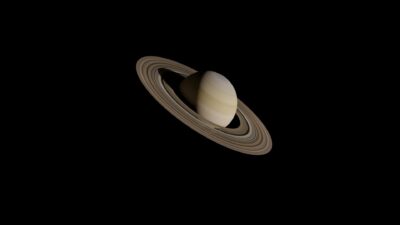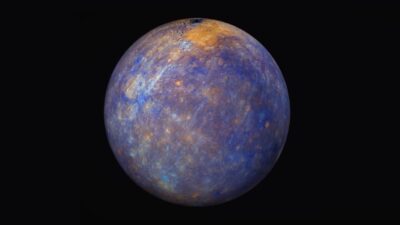Did you know that Uranus is one of the weirdest planets in our solar system? This icy, blue-green planet is full of surprises that make it stand out from the rest. From spinning on its side to having rings and moons with strange names, Uranus is unlike any other planet we’ve discovered.
Even though Uranus is over 1.8 billion miles away from Earth, scientists have learned a lot about it since it was first discovered in 1781. But here’s the thing: the more we study Uranus, the more questions we have! It’s a planet that keeps surprising us with its strange and mysterious features.
“Uranus is a planet that challenges what we think we know about the solar system,” says Dr. Heidi Hammel, a scientist who studies planets. “It’s so different from the others, and that’s what makes it so exciting to explore.”
In this blog, we’ll share 13 strange but true facts about Uranus that will blow your mind. Whether you’re a space fan or just curious about the universe, these facts will show you why Uranus is one of the most interesting planets out there.
13 Strange Facts About Uranus
1. Uranus Spins on Its Side
Unlike any other planet in the solar system, Uranus spins on its side. Most planets rotate upright or at a slight tilt, but Uranus has a whopping 98-degree tilt. This means it essentially rolls around the Sun like a ball instead of spinning like a top.
Scientists believe a massive collision with an Earth-sized object billions of years ago knocked Uranus over. As a result, one of its poles is always facing the Sun, while the other is plunged into darkness for decades at a time. Imagine living in a place where the Sun doesn’t rise for 42 years!
2. It’s the Coldest Planet in the Solar System
Despite being farther from the Sun, Neptune isn’t the coldest planet—Uranus is! Its atmosphere can reach bone-chilling temperatures of -371°F (-224°C), making it the coldest place in the solar system.
You’d think the planet farthest from the Sun would be the coldest, but Uranus’s lack of internal heat sets it apart. While other planets generate heat from their cores, Uranus seems to have lost most of its internal warmth, leaving it icy cold.
3. Uranus Has Rings (Yes, Rings!)
When you think of planetary rings, Saturn probably comes to mind. But did you know that Uranus has rings too? It has 13 faint rings, made mostly of dark particles that are hard to see.
Unlike Saturn’s bright, icy rings, Uranus’s rings are thin and dark, almost invisible to the naked eye. They were only discovered in 1977 when scientists noticed them blocking starlight during an observation.
4. It Was the First Planet Discovered with a Telescope
While the other planets visible to the naked eye have been known since ancient times, Uranus was the first planet discovered using a telescope. Astronomer William Herschel spotted it in 1781.
Herschel initially thought Uranus was a star or a comet. Its discovery expanded our understanding of the solar system and marked the beginning of modern astronomy.
5. Uranus Smells Like Rotten Eggs
If you could take a whiff of Uranus’s atmosphere, you’d probably regret it. The planet’s atmosphere is rich in hydrogen sulfide, the same gas that gives rotten eggs their foul smell.
This stinky fact highlights the unique chemical composition of Uranus’s atmosphere, which is mostly made of hydrogen, helium, and methane. Methane is also what gives Uranus its blue-green color.
6. A Day on Uranus Is Only 17 Hours Long
While a year on Uranus lasts 84 Earth years, a single day is surprisingly short—just 17 hours and 14 minutes. That’s how long it takes Uranus to complete one full rotation.
In comparison, Earth’s day is 24 hours, while Jupiter’s is just under 10 hours. Uranus’s rapid rotation adds to its list of oddities.
7. Uranus Has 27 Moons
Uranus is home to 27 known moons, and they’re all named after characters from the works of William Shakespeare and Alexander Pope. Some of the most famous moons include Titania, Oberon, and Miranda.
Miranda, in particular, is fascinating because of its chaotic surface, which looks like it’s been smashed and reassembled. Scientists think this may be due to past collisions or geological activity.
8. Uranus Was Almost Named “George”
When William Herschel discovered Uranus, he wanted to name it Georgium Sidus (George’s Star) in honor of King George III of England. Thankfully, the name didn’t stick, and astronomers eventually settled on Uranus, named after the Greek god of the sky.
Imagine teaching kids about the solar system and saying, “Mercury, Venus, Earth, Mars, Jupiter, Saturn, George, and Neptune.” It just doesn’t have the same ring to it!
9. Uranus Is an Ice Giant
While Jupiter and Saturn are classified as gas giants, Uranus and Neptune are known as ice giants. This is because they have more icy materials like water, ammonia, and methane in their composition.
Ice giants are smaller and denser than gas giants, with thicker atmospheres and icy cores. This makes Uranus and Neptune unique among the outer planets.
10. Uranus’s Magnetic Field Is Lopsided
Most planets have magnetic fields that align with their rotation, but Uranus’s magnetic field is tilted by about 60 degrees from its axis. It’s also off-center, meaning it doesn’t originate from the planet’s core.
This strange magnetic field creates weird auroras and makes Uranus’s magnetosphere one of the most complex in the solar system.
11. Uranus Is Barely Visible to the Naked Eye
Although Uranus is technically visible without a telescope, it’s so faint that ancient astronomers never recognized it as a planet. It appears as a small, dim star in the night sky.
This explains why Uranus wasn’t discovered until the 18th century, even though it’s been orbiting the Sun for billions of years.
12. Uranus Has Extreme Seasons
Thanks to its sideways tilt, Uranus experiences some of the most extreme seasons in the solar system. Each season lasts about 21 Earth years, with one pole basking in sunlight while the other is in total darkness.
These long seasons create dramatic temperature differences and unique weather patterns, including supersonic winds that can reach speeds of up to 560 miles per hour.
Conclusion
Uranus may not get as much attention as Mars or Saturn, but it’s one of the most fascinating planets in our solar system. From its sideways spin to its icy atmosphere and stinky clouds, Uranus is a treasure trove of strange and surprising facts. It reminds us that the universe is full of mysteries waiting to be explored.



